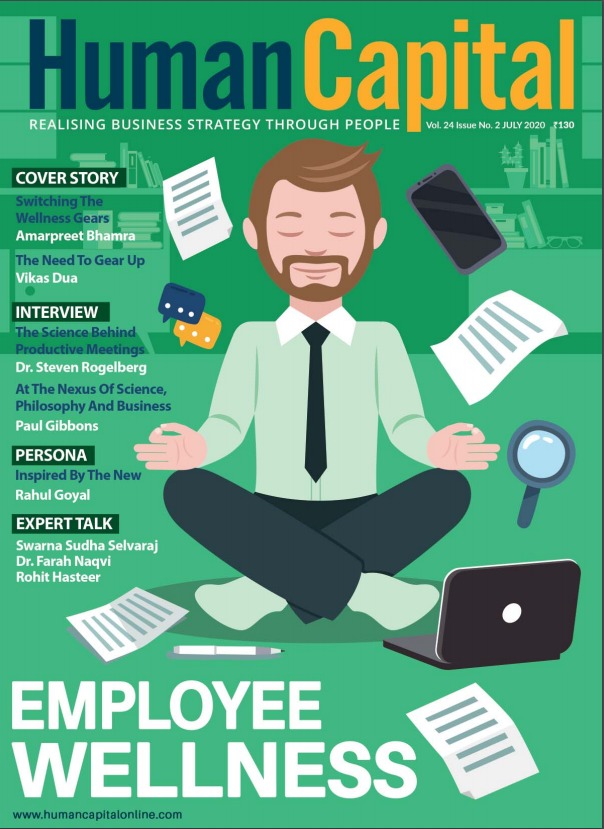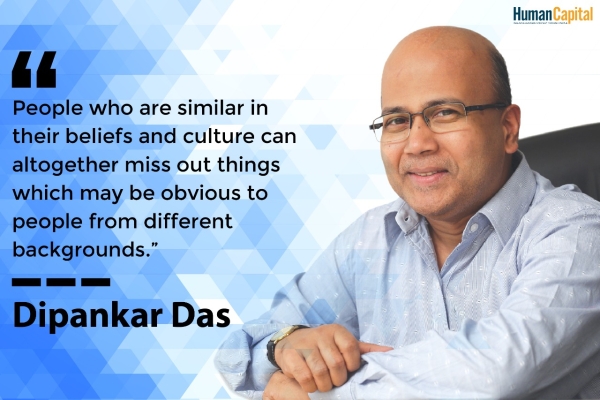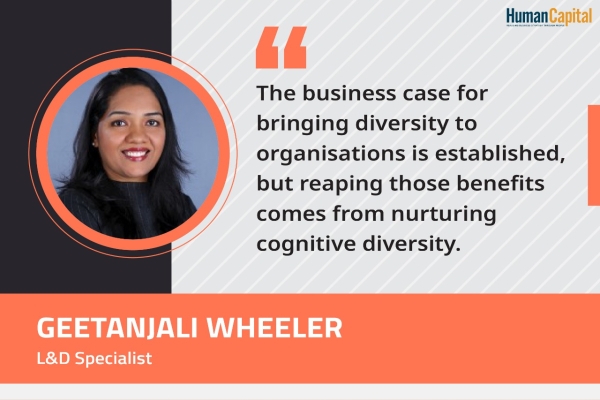‘Feedback is information about our actions that helps us to learn.’ – From the Handbook For Managers by The Oxford Learning Institute
While there is a lot of focus on communication skills in organisational behaviour, feedback often gets banished to either a small module or just a slide. In the context of an organisation, Feedback implies the means by which a manager or peer recognises/acknowledges another’s achievements and highlights areas for development. ‘Feedback is information about our actions that helps us to learn.’
When one looks at his/her professional life, what one primarily seeks from his or her managers and peers is in fact feedback. And, the expectations are - feedback on performance, the efforts invested, whether one is doing the task the way it should be, or, is it being done a great deal better than expected, or, maybe it is not up to the mark.
Do managers give feedback?
Most managers do not provide sufficient feedback, and when they do, they either make it too negative, or, are too vague while trying to ensure that it remains positive. Feedback if given effectively is a “Leaders Magical Gift” that builds thought, acceptance, and, ultimately change.
Feedback can be of 4 types:
Generic: This is the feedback that we often see being used in organisations day in and day out. Irrespective of whether the feedback is positive, negative or developmental; the feedback is very generic, and neither makes room for specific examples nor data or observations to back up the feedback. For the receiver, this can be very confusing as they fail to understand the context, nor can they understand when such a behavioural pattern from their side was observed.
E.g.- “You never do anything on time?”
“You are really a very hard worker”
Positive: This focuses on what went well and can therefore be termed as appreciation in a deeper sense. The receiver repeats the behaviour, and therefore, does it more often. Such a type of feedback lets the receiver know that the behaviour is liked by the manager/peer.
E.g. – “In the meeting today morning, you raised a point about ………., this made the Technical team give us deeper insights on …………… That really helped all of us understand what exactly could be the challenge the client is facing”
Negative: This focuses on the aspects that went wrong. It is devaluing a person in a deeper sense. Many a times, the emotions of the giver get attached to such a kind of feedback and can therefore be demotivating and demeaning in many ways for the receiver. What gets missed mostly is the stimuli for improvement.
E.g. – “You never reach meetings on time. You are the one who creates a bad impression for all of us. Shame on you!”
Developmental (also termed as Areas of Improvement / Constructive): This is used in lieu of negative feedback. The lens used in such a feedback is to look at the receiver holistically, and, not just from that single event. Developmental feedback ideally functions with the belief that mistakes can happen and can be rectified, that people can change if they are provided with appropriate guidance. In simple words, ‘the clay can be moulded!’ Developmental feedback can either propose alternatives or ask the receiver for the alternatives that emerge for them.
E.g. – “In the presentation today, you started with a joke. The joke was on working women and it wasn’t appropriate at all. I did see Jaya looking down, irritated. As an organisation, we respect the contribution of men and woman equally and such disrespect to one gender isn’t appreciated. What could you have used instead of such inappropriate jokes.”
Feedback Models
Certain models used for providing feedback are used in organisations that have robust training interventions on this topic. The outcome of each of these models is the balance between Positive and Developmental Feedback. If used correctly, these models by itself make the feedback specific!
1. STAR & STAR/AR
[Positive] Situation or Task, Action, Result
[Developmental] Situation or Task, Action (done inappropriately/ not done), Result (not up to mark) / Alternate Action, Alternate Results
2. SBI & SBI ABI
[Positive] Situation, Behaviour, Impact
[Developmental] Situation, Behaviour, Impact / Alternate Behaviour, Alternate Impact
3. +/ EBI
[Positive] + Positives
[Developmental] Even Better If…….. (complete the sentence)
4. EEC
[Positive] Example (specific), Effect, Continue
[Developmental] Example, Effect, Change[ak1]
Drivers for meaningful feedback
There are 2 important drivers to making feedback impactful
1. Intention of the Giver – Is the intention of the giver truly intended to drive change in the receiver. Is it genuine? Or, is it with an ulterior motive?
2. Feelings of the Receiver –What is going on within the receiver at that precise instant. If given now, would the receiver take the feedback in the way it is meant to? Would it be wise to give it later?
Can all this be used whilst receiving Feedback?
The answer is absolutely “Yes!”
Whenever you hear feedback that is generic, you may ask for specific examples and then for what action/behaviour was observed/positive/developmental and what was the result of that action. And then seek from the feedback giver what are the alternatives that you could have used and what would have been its impact!
The OFTEN Conversational Framework
Feedback can be used in a conversational style especially when used in non‑organisational environment. Say for instance between spouses or with parents.
O - Open with Rapport
F - Feedback model (STAR, SBI, EEC)
T- Thoughts and Feelings check (Build Empathy)
E - Engage with Developmental (AAR, ABI, ABI, EEC)
N - Next Steps agreement & closure
The only way for all of this to work, is if Managers and Leaders follow 2 fundamental principles
1. Do we observe/record our team members so that we can give this magical gift?
2. Do we schedule time with our team members to have authentic deep conversations on a regular basis?
If these 2 principles are not followed, the intention of the person /department providing the feedback is suspect and therefore will carry no trust.
Is your organisation post-COVID-ready?
Trending
-
SBI General Insurance Launches Digital Health Campaign
-
CredR Rolls Out 'Life Happens' Leave For Its Employees
-
Meesho Announces 30-Week Gender-Neutral Parental Leave Policy
-
Microsoft Unveils Tech Resilience Curriculum To Foster An Inclusive Future
-
60% Indian Professionals Looking For Job Change Due To COVID: Survey
-
SpringPeople And Siemens Collaborate For Digital Transformation Push
-
86% Professionals Believe Hybrid Work Is Essential For Work Life Balance: Report
-
Almost 1 In Every 3 People's Personal Life Affected Due To Work Stress
-
Meesho Rolls Out Reset And Recharge Policy For Employees
-
80% Of Talent Leaders & Academics Say Pandemic Changed Skill Needs For Youth: Report
-
Hero Electric Rolls Out 'Hero Care' Program For Employees
-
Human Capital In Collaboration With ASSOCHAM Hosts Virtual Conference
-
IKEA India, Tata STRIVE Collaborate To Create Employability And Entrepreneurship Opportunities
-
SAP India, Microsoft Launch Tech Skilling Program for Young Women
-
DXC Technology, NASSCOM Collaborate For Employability Skills Program
-
Lenskart To Hire Over 2000 Employees Across India By 2022
-
Mindtree Launches Learn-and-Earn Program
-
Tata AIA Extends 'Raksha Ka Teeka' To Its Employees
-
Swadesh Behera Is The New CPO Of Titan
-
NetConnect Global Plans To Recruit 5000 Tech Professionals In India
-
Hubhopper Plans To Hire 60% Of Indian Podcasters By 2022
-
Corporate India Needs More Women In Leadership Roles: Report
-
Aon to Invest $30 Million and Create 10,000 Apprenticeships by 2030
-
Tech Mahindra Launches ‘Gift a Career’ Initiative for Upskilling of Youth
-
40% Women Prefer Flexible Working Options in Post-COVID World: Survey
-
3 out of 4 companies believe they can effectively hire employees virtually: Report
-
Vodafone , CGI and NASSCOM Foundation launch digital skills platform
-
Odisha: Bank, postal employees to deliver cash for elderly, differently-abled persons
-
Skill India launches AI-based digital platform for "Skilled Workforce"
-
Hiring activity declines 6.73% in first quarter: Survey
-
70% startups impacted by COVID-19 pandemic
-
Bajaj Allianz Life ropes in Santanu Banerjee as CHRO
-
Over 70 Percent MSMEs look at cutting jobs to sustain businesses
-
93 Per Cent employees stressed about returning to office post-lockdown
-
Johnson & Johnson India announces family benefits for same gender partners
-
Indian firms turning friendly towards working mothers
-
Welspun India names Rajendra Mehta as new CHRO
-
Wipro partners with NASSCOM to launch Future Skills platform



Human Capital is niche media organisation for HR and Corporate. Our aim is to create an outstanding user experience for all our clients, readers, employers and employees through inspiring, industry-leading content pieces in the form of case studies, analysis, expert reports, authored articles and blogs. We cover topics such as talent acquisition, learning and development, diversity and inclusion, leadership, compensation, recruitment and many more.
Subscribe Now












































Comment